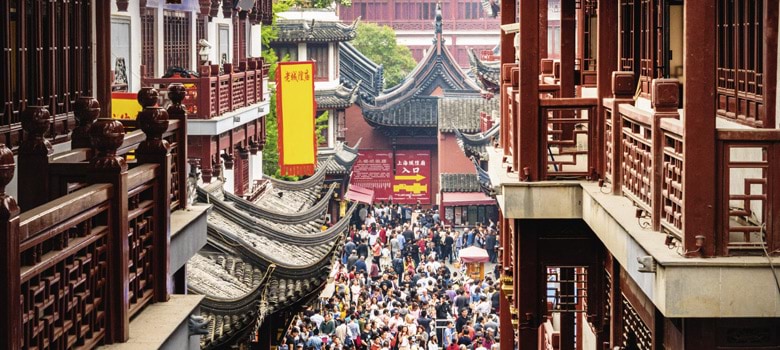
Food
Shanghai dining: old & new
Cat Nelson reveals the culinary character of contemporary Shanghai.
From its opening, this place caught my attention,” Jonathan He says with palpable enthusiasm. We’re perched on bar stools looking out over a leafy street in the heart of Shanghai’s former French Concession at Bird, a petite, airy restaurant opened in 2018 by American transplant and Shanghai restaurateur Camden Hauge. “I thought, perhaps this is somewhere I could run one day in the future,” He adds, “…and now here we are.”
The 27-year-old, freshly minted head chef just finished his first month helming the Bird kitchen. He is taking over from Shanghai-born Chris Zhu, another young chef who along with Hauge, set the course for the restaurant as experimental, vibrant and playful. It’s one of the few in a small, but slowly growing new breed of restaurants in the city: relaxed and unfussy chef-driven concepts infused with local touches. Set against a rich tapestry of culinary traditions, the present-day food scene embraces the sharp contrast of old and new that’s so clear from one glance at the city’s multiple skylines.
A NEW WAY FORWARD
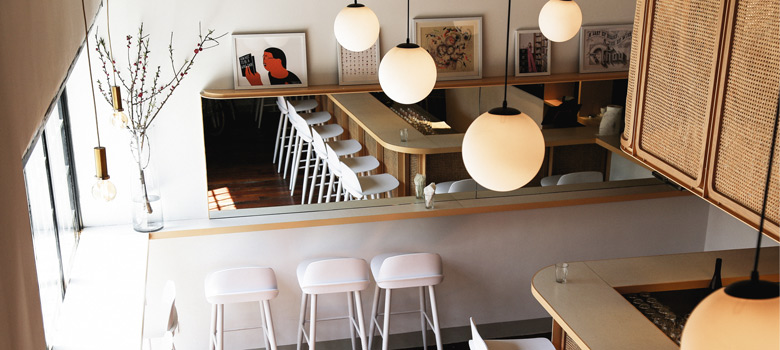
With a résumé full of kitchens in seemingly every cuisine but Chinese, He’s opening menu at Bird (pictured above) features dishes with an eclectic blend of influences, injected with a smattering of Chinese flavours. Take the Shanghainese carbonara, his riff on the city’s signature scallion oil noodles infused with Italian techniques he’s picked up along the way. It’s a dish that originated as “poor man’s food”, says He. “You’d have noodles in the morning for five or six yuan. This dish reminds you of that taste when you were a child years ago.”
Then there’s a Cantonese-style roasted pork neck, served with a South American-inspired roasted chilli mojo, plus garlic scapes in rice vinegar and laobing (a coriander-flecked pancake), all three specialities of He’s home province of Shanxi.
Also pushing the city’s gastronomic envelope, designer Diao Wei and bartender Gong Xian run a handful of unapologetic venues together in Shanghai. The Guizhou natives enlisted high-octane New Zealand chef Blake Thornley to captain the inventive, Guizhou-inflected kitchens at the intimate Oha Eatery and a dual concept called Blackbird/Table Black. Diao describes menu development as a collaborative effort between the three, with research trips to the countryside of their home province transforming into funky fermented tofu salads and intensely rich whipped duck liver with smoked eel, crispy pig ears, puffed rice and soy mint caramel.
The dishes aren’t nearly as wild at new boutique luxury hotel The Middle House’s contemporary Chinese restaurant Sui Tang Li, but it’s also certainly not your traditional Chinese meal.
“It’s about finding that perfect blissful point where guests can taste something new in a familiar dish, so that extra modern twist can be appreciated and not misunderstood,” says Shanghainese chef Tony Ye, who turns out sumptuous foie gras chicken potstickers and vegetarian soup dumplings (pictured below) perfumed with black truffle alongside levelled-up dishes he remembers from childhood like yellow croaker with preserved vegetables, which he turns into wontons.
SHANGHAI STYLE
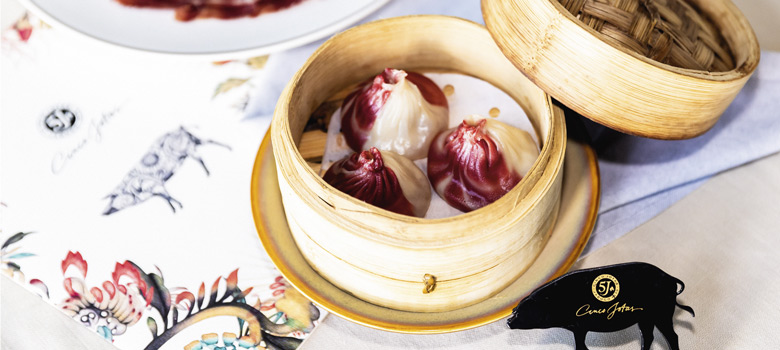
Only 200 years ago, Shanghai was just a small fishing village. “At first Shanghai cuisine was a country cuisine, completely unsophisticated, but as more people migrated here, it developed into what we call ‘benbangcai’,” says Shen Jing Ming, Shanghai local and chef at well-loved, perennially busy Shanghainese restaurant Jianguo 328. Translating to ‘local cuisine’, benbangcai is the name for the city’s traditional cuisine served in both family-style eateries and high-end Old Shanghai restaurants.
“Our Shanghainese cuisine is benbangcai turned into haipaicai,” he continues, describing the city’s culinary evolution in the 20th century. With the influx of immigrants from across China as well as abroad, influences from all over blended with the local cuisine into what’s termed haipaicai or ‘Shanghai style cuisine.’ It’s a reference to the avant-garde, east-meets-west culture singular to the city. On the plate this arrives as fried pork cutlets served with a Shanghai interpretation of Worcestershire sauce, adopted from British émigrés.
Shen encourages visitors to try traditional benbangcai – luscious tangles of scallion oil noodles, melt-in-your-mouth squares of red-braised pork, fragrant crispy fried duck and Chinese red dates stuffed with sticky rice. “The signature traits of benbangcai can be represented by four characters: nong (thick and concentrated), you (oily), chi (red), jiang (sauce),” he explains. It’s a cuisine known for its proclivity for sweet and the use of oil, thick sauces and stewing. However, in the last 20 years, there’s been a focus on using less oil and making the cuisine healthier, Shen notes.
People like to dismiss Shanghainese mainstay Old Jesse as ‘just for tourists’, but its die-hard adherents – myself one of them – can’t get enough of the humble eatery’s renditions of Shanghai classics like kaofu (steamed gluten) with wood ears, daylily and peanuts or its signature buttery ‘opium fish head’ that comes nestled under a small mountain of roasted scallions and must be ordered in advance.
If Shanghai has one gastronomic signature, it’s xiaolongbao. Soup dumpling shops are ubiquitous, with everywhere from Taiwan-founded international chain Din Tai Fung to small mom-and-pop shops. While the dumplings at Din Tai Fung are inarguably delicious, you can slurp up the most local atmosphere along with your food at spots like Lin Long Fang and Jiajia Tangbao, where lines can form out the door for steamers of pork dumplings filled with soup.
Lesser known globally is the shengjianbao – soup dumplings with the strong stance that everything fried is better. Traditionally filled with pork or shrimp, the outside varies from thin, nearly translucent skin at local chain Xiao Yang to pillowy, yeasted dough that’s risen twice at Michelin’s Bib Gourmand recommended Da Hu Chun, with a middle ground at Dong Tai Xiang’s old school digs.
THE COSMOPOLITAN SPIRIT
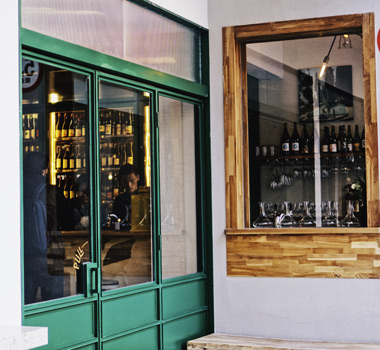
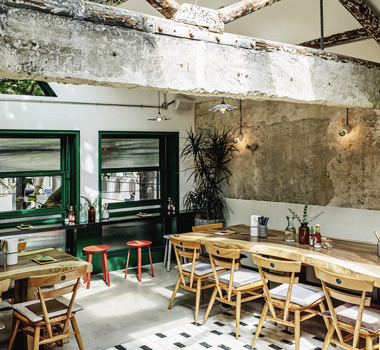
From haipai to Art Deco architecture to the former French Concession, there’s no ignoring the global influences woven deeply into the fabric of the city. Modern-day Shanghai buzzes with a similar cosmopolitan energy that you can imagine once coursed through the stylish parts of town in the 1930s. Soak it up at French eatery and natural wine bar RAC (pictured above), where groups of well-heeled young locals and hip expats share a large communal table. “It’s about the cuisine, but it’s also about the vibe,” says Simon Briens, who’s lived in Shanghai for a decade.
Part of that vibe is the 300-bottle strong wine list that’s heavy on natural wines, a selection which Briens curates alongside a mouth-watering menu of cheesy Breton-style galettes and sweet crepes at RAC’s two locations.
“For many years, wine in China was really reserved for elites,” says Briens. “They only drank labels so that they could spend.” Now, a new generation of open-minded 20-somethings is eager to discover wine and dive into the non-conventional. “I’m really surprised sometimes because the wine can be funky,” Briens tells me. “I’m still amazed when we have a table of, say, four young women and they have a few bottles of something very atypical, something I wouldn’t even give my father because he wouldn’t understand or like it.”
Rocketing from fishing village to heaving metropolis in the blink of an eye, forward-looking Shanghai has always had a hunger for the new, but never has that been more apparent in its food scene than now.